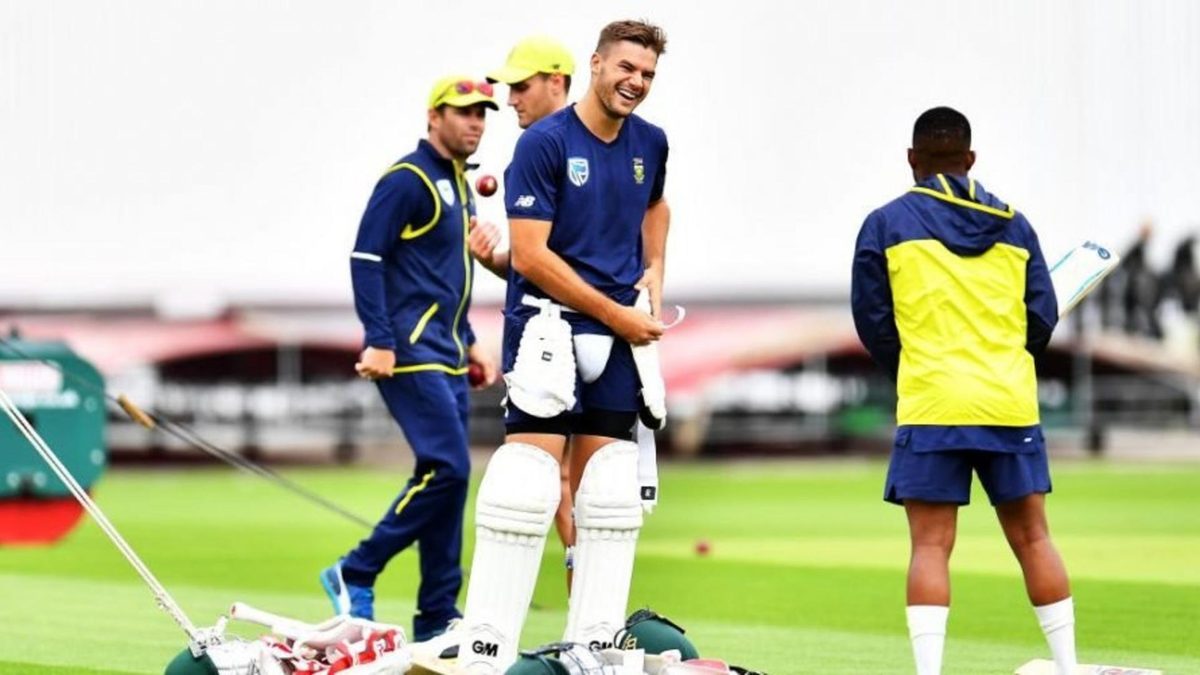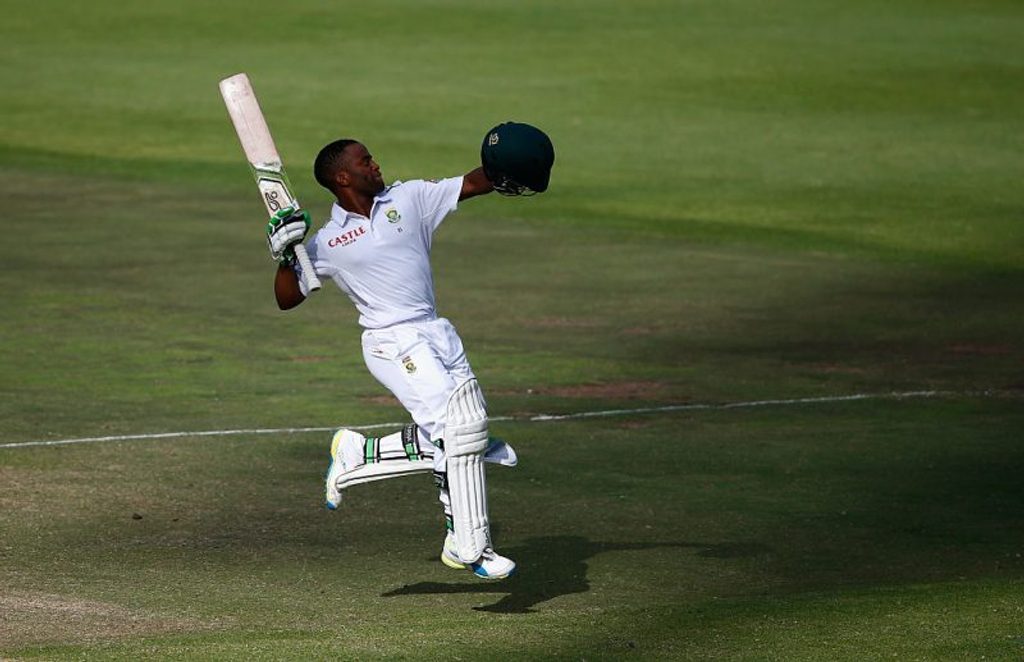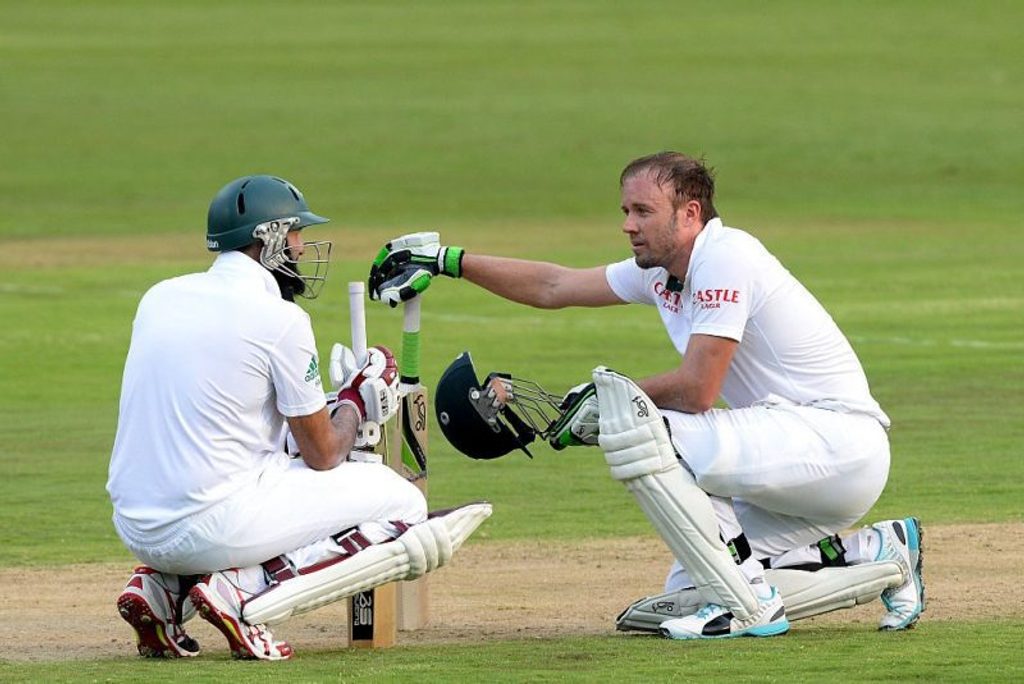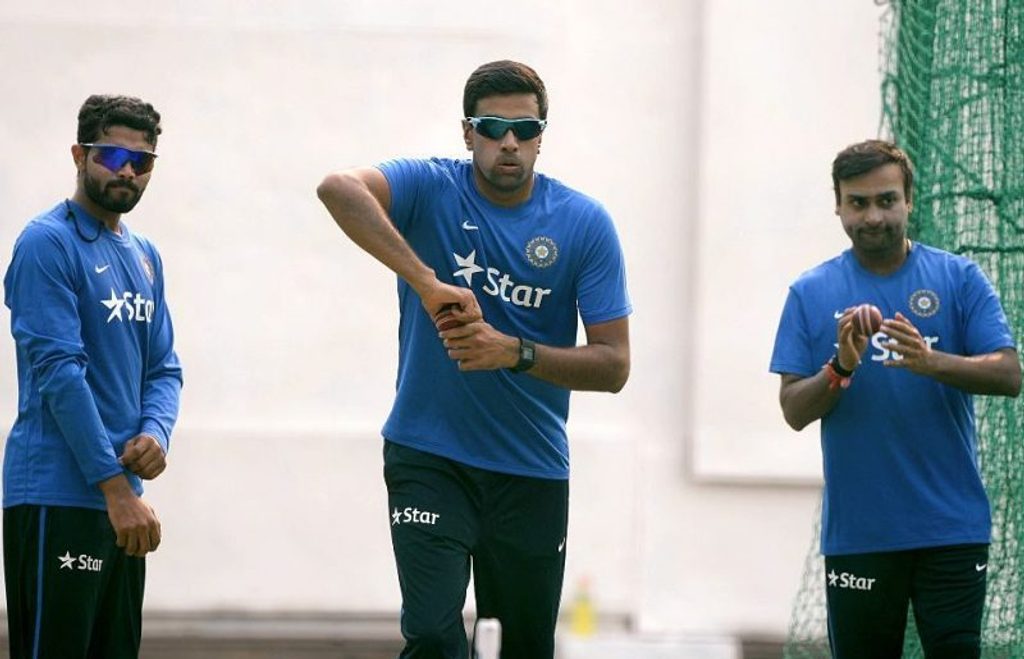
Temba Bavuma and Aiden Markram were part of a spin-bowling camp in India ahead of South Africa’s A tour and Test series in the country. Aadya Sharma watched them prepare for the challenge.
Bavuma let out a cry of anguish. Straining forward and flexing his left knee, he displayed a copybook forward defence, but saw helplessly as another delivery turned slightly and sneaked past his bat. He missed a few more during the day, all reminders that there was still work to do.
South Africa’s new vice-captain was sorting out his spin game at Just Cricket grounds, on the outskirts of Bangalore. It was the final day of a specialised spin camp to help a 15-man touring squad dip their feet in Indian conditions. In just over a month from now, the senior team will visit India to face Virat Kohli’s men in three Tests. On their last visit to India four years ago, South African batsmen were dismissed 61 times by India’s spinners across four games. The inclination to prepare for it is understandable.
Right behind Bavuma’s stumps stood Aiden Markram, arguably the biggest name on the roster. Cheerfully relaxed, Markram shared batting space with Bavuma, the two taking turns to face the assortment of spinners. The opener oozed fluency, swatting length balls on one knee to the leg side, and generously employing the sweep to kill the turn. Jumping out to thump the ball down the ground, and cutting the short ones behind square, he interspersed them with classy drives and made for a pretty picture, still compact as always.
 Temba Bavuma’s only Test ton came 43 months ago
Temba Bavuma’s only Test ton came 43 months ago
Both Bavuma and Markram are two key elements of a Proteas line-up in transition after the retirements of Hashim Amla and AB de Villiers.
Bavuma essays a crucial and demanding role at No.6. Being named deputy to Faf du Plessis could be a massive push for Bavuma, who, after 36 Tests, is still trying to find that career-defining knock. His solitary Test hundred came 43 months ago.
Markram, meanwhile, has been South Africa’s most prolific Test player since his debut, averaging over 65 at home. He is, however, severely lacking in sub-continental experience, having played just two first-class games on Asian soil, both Tests against Sri Lanka last year, where he accumulated 40 runs in four innings. On all four occasions, he got out to the left-arm spin of Rangana Herath – a variety found in abundance at the spin camp.
On this crucial India tour, the duo has added responsibilities, having being named captains of the A sides for the limited-overs and four-day series respectively in India before the Test series. This, even as they look to improve their own game.
Against them was a mix of South Africa’s visiting spinners and the domestic tweakers on offer, the batsmen doing their best to carefully read the angle and dip.
During their short stint in Bangalore, the South Africans were mentored by Raghuram Bhat, a former India Test spinner. Having had constant knowledge pumped in about fielding placings, turning tracks and ‘the right areas’ to bowl, the spinners now travel to play the A series loaded with their new experiences.
 With Amla and AB de Villiers retired, a new era beckons South Africa’s batting line-up
With Amla and AB de Villiers retired, a new era beckons South Africa’s batting line-up
“Visiting teams need to get used to conditions first up,” Bhatt later told Wisden. “They tend to take the help of local coaches, to analyse how to bowl on a wicket that is turning. If it’s a vicious turner, foreign spinners might not know where exactly to bowl.
“They learn how to figure out a batsmen’s weakness – we call it the ‘blind spot’ of the batsmen. It’s about attacking it, and bowling a mixture of slow and faster ones.”
A challenge most visiting batsmen face is using the crease competently and judging the line correctly to a turning ball. While the sweep shot acts as a pressure-freeing trigger for many, knowing how to play the particular stroke on Indian surfaces is also an art they need to acclimatise themselves to.
“[Abroad], the ball comes straight, and they move away to sweep the ball. Here [in India], with the ball turning more, they try to place their front leg correctly and understand where to sweep from. That is their learning point here.
“The key is to come right behind the ball when it’s turning, and that’s what they have learnt in the last three days.”
Miles away from his hyperactive fielding self, Bavuma can be staid with a bat in hand. A fierce cutter and puller of the ball, he looked determined to dead-bat all that came on the off-stump channel, thrusting his tiny frame in neat defence.
 During the 2015 series, India’s spinners claimed 88 per cent of South African dismissals
During the 2015 series, India’s spinners claimed 88 per cent of South African dismissals
The odd breaks of impatience emerged, where he would paddle or ramp the ball, gloving it up or missing it altogether. One delivery gripped off the surface and sprung past his head. “One for the over,” he cheekily quipped.
In 36 games, Bavuma has faced over 200 deliveries in a single innings just once. On Indian pitches, the No.6 might have to bat long and play the drab, survival game. And he seems to know it: as players broke for lunch, he continued to earnestly defend good balls on off, putting the full ones away. Even a brief burst of rain couldn’t dislodge him from his crease; the rest of the batsmen went scurrying, but a shirtless Bavuma stayed put, still batting.
It’s the kind of resolve South Africa will need as they bid to combat India’s spinners. Despite a rapidly emerging pace attack that can hold its own, spinners have accounted for almost 70 per cent of India’s home wickets [293 out of 419] since South Africa’s last visit in 2015.
When the day ended, Bavuma was in his own bubble, keeping to himself. Markram, in contrast, was in high spirits. Distinct in their own ways, how the two adapt in the next month will be crucial to their common task ahead: to claim South Africa’s first Test series win on Indian soil since 2001.








